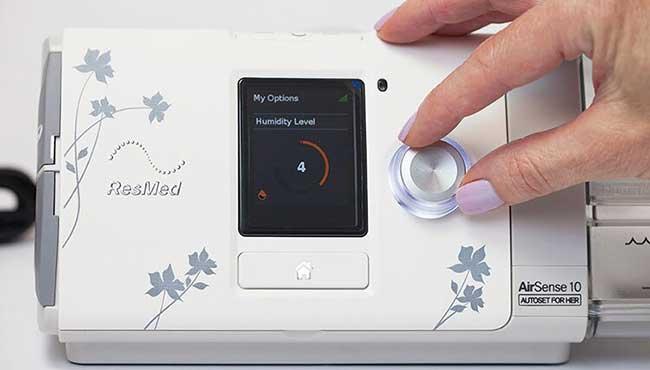What Secrets You Don't Know About Ventilators
By Gavin | November 16, 2022
What secrets do you not know about ventilators?
Suppose you've been snoring or having trouble breathing during sleep and are still easily woken up. In that case, you may have an obstruction in your upper airway. According to a recent study, more than 1 billion people worldwide suffer from various forms of sleep apnea.
There have been medical breakthroughs in sleep apnea, and the most common and safest form of treatment is a ventilator.

Generally, depending on the severity of your illness, your doctor will recommend a CPAP, APAP, or BiPAP ventilator. So what do these terms stand for? How should I choose one? Here are the details for you!
CPAP Single Level Semi-Automatic Continuous Positive Airway Pressure
CPAP ventilator is the abbreviation of Continuous Positive Airway Pressure, which means that under spontaneous breathing conditions. The patient should have a stable respiratory drive and appropriate tidal volume to artificially apply a degree of positive intra-airway pressure throughout the respiratory cycle. And thus preventing airway collapse, increasing ventilation, improving lung compliance, and increasing oxygenation, i.e., continuous positive pressure ventilation.
A CPAP machine consists of a motorized device, humidifier, hose, and mask. The ventilator pumps air into the patient as pressure, and a built-in humidifier prevents throat dryness at night. CPAP is indicated as a single-level mode, which allows you to change your appropriate pressure range through the pressure settings on the device.
Patients with OSA (obstructive sleep apnea) can use the CPAP ventilator. The CPAP ventilator is more suitable for people with mild apnea disorders, and the machine is straightforward.
APAP Single Level Automatic Continuous Positive Airway Pressure
The AUTO CPAP ventilator is a fully automatic continuous positive airway pressure (CPAP) ventilator that adjusts the treatment pressure according to the patient's airway obstruction within a set pressure range, significantly increasing the comfort of treatment. Patients with obstructive sleep apnea hypoventilation syndrome.
APAP is better tolerated than CPAP, the predominant treatment modality in the market today.
APAP is indicated for people who are intolerant to CPAP, patients with OSAHS whose apnea status is unstable due to body position, alcohol consumption, medications, etc.
BiPAP bi-level fully automatic positive airway pressure
BiPAP ventilation therapy is indicated for dual pressure settings, one for inhalation (IPAP) and the other for exhalation (EPAP), where the machine provides a higher inspiratory pressure for inspiration.
And a lower expiratory pressure for exhalation, thus ensuring that the patient breathes smoothly and that the machine remains synchronized with breathing.
Benefit: This mode reduces the resistance during exhalation when the patient needs high-pressure therapy and has better comfort than a single level.
Population: Patients with treatment pressures above 15 cmH2O, those who cannot receive or are uncomfortable with CPAP, and those with comorbid chronic obstructive pulmonary or obesity hypoventilation syndrome.
CPAP provides you with pressure that can be manually switched on demand.
APAP does not require you to adjust the pressure, setting the pressure range yourself. It automatically calculates the force you need and adjusts the airflow.
BiPAP gives you a dual pressure range, one for inhalation and one for exhalation.
CPAP BiPAP settings
If you are having difficulty breathing during sleep, it is recommended that you see your doctor. During this process, your doctor will analyze your breathing pattern data to develop the most appropriate treatment for your apnea. The doctor will calibrate the ideal pressure range for the CPAP machine based on your sleep monitoring. The outcome of all three will depend on the patient's condition.
Non-invasive ventilation ventilators have become the preferred and primary treatment for most patients with sleep-breathing disorders. Hopefully, patients reading this article will have a new appreciation for ventilators, which will increase treatment success and improve quality of life.